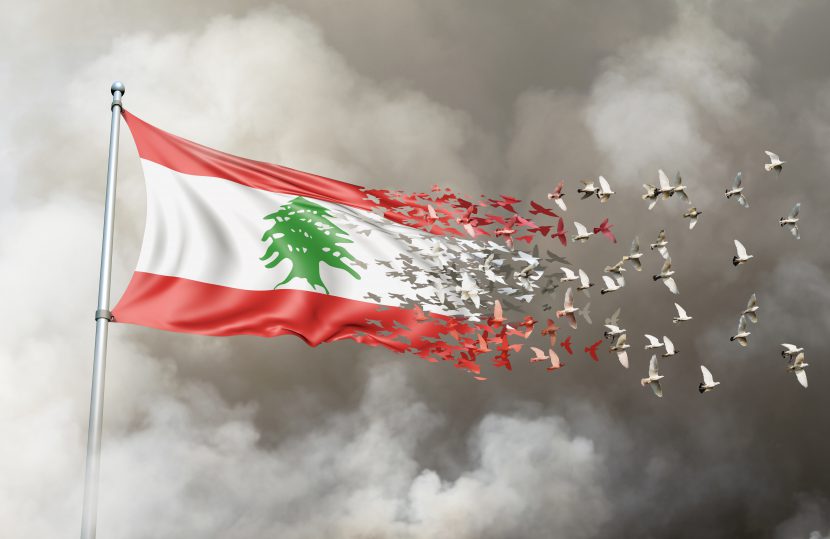On August 4, 2020 Beirut was a theater of a catastrophe. The blast hit Lebanon’s society as a whole: many people have lost their lives, many have lost their home, but all of them have lost their basic right to live in a clean, safe and healthy environment. Children, as the most vulnerable, are still suffering from the consequences of the blast and are living in dramatically critical conditions.
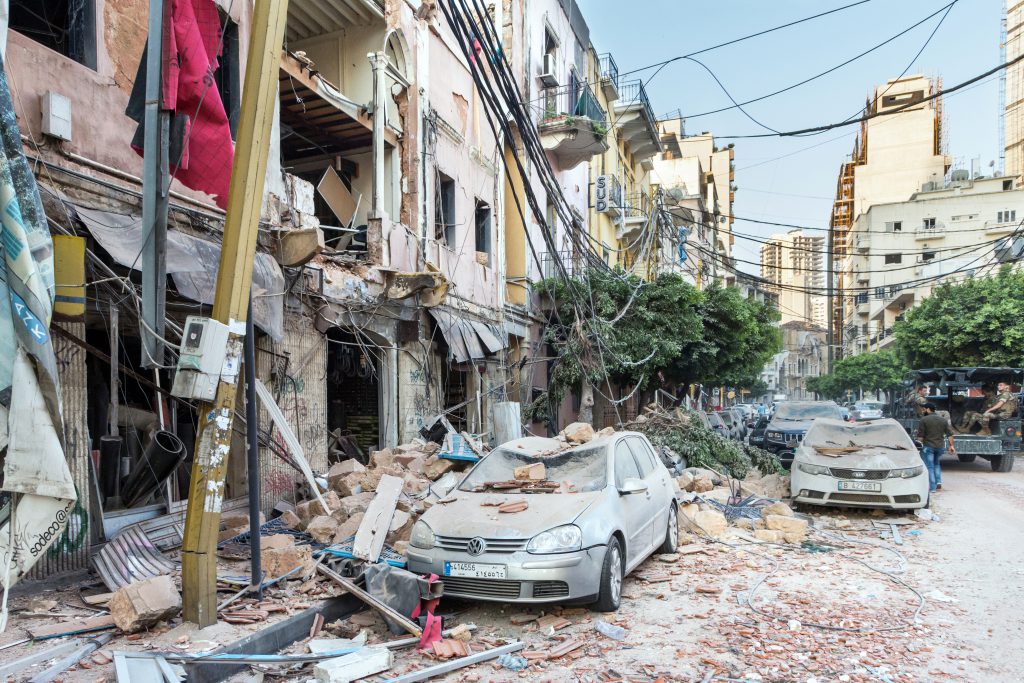
Beirut – Before and After the Catastrophe
Beirut is one of the oldest cities in the world, the so-called “party capital of the Arab world”. Beirut is the city of contradictions whose character blends the sophisticated and cosmopolitan with the provincial and parochial. Beirut has always been a strategic point in the Mediterranean coast because of its regional port, main center of trade and importation, vital to the nation’s infrastructure. Nowadays, Beirut is a city theater of a catastrophe, that has the burden of years of maladministration on its shoulder.
August 4, 2020 is the date when years of irresponsibility from the political class have led to a national catastrophe. Around 15:08 UTC, an explosion took place at the port of Beirut in a facility storing approximately 2750 tonnes of chemical ammonium nitrate. After a few seconds, shockwaves were all across the city and neighboring areas. The explosions ripped through hospitals, health centers, schools and other vital public buildings.
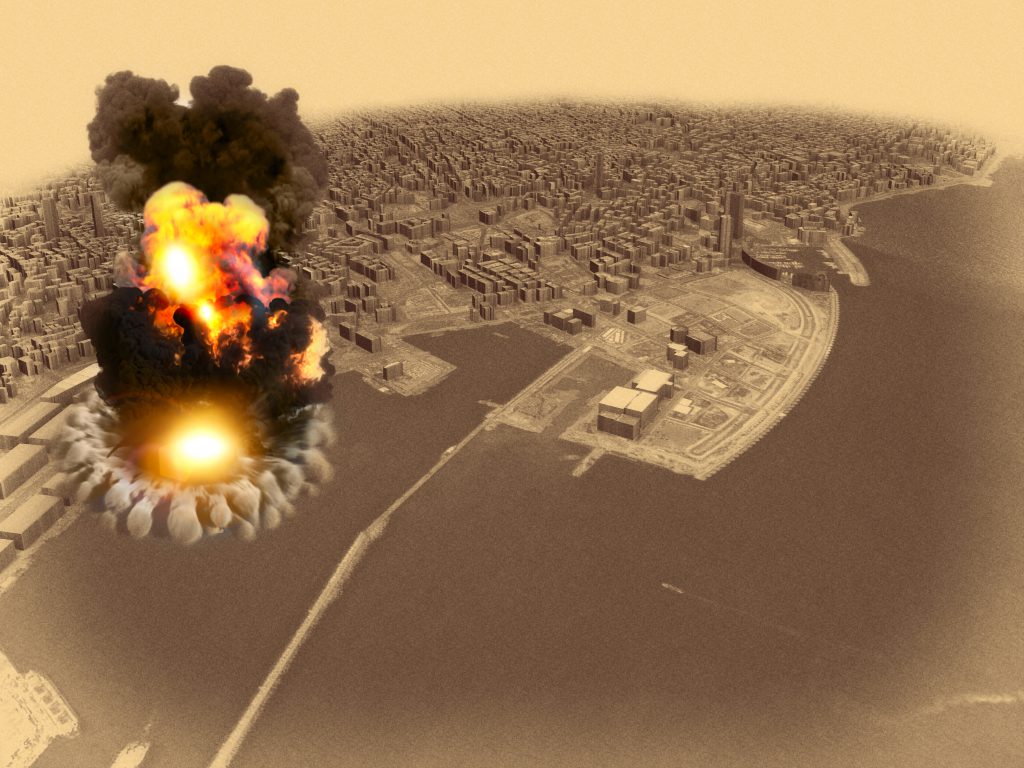
The official story from Lebanese authorities is that a warehouse fire ignited a seized shipment of ammonium nitrate, impounded from a ship in the port in 2013 and seemingly left there ever since (Foreign Policy, 2020). On August 10, soon after rejecting an international inquiry into the explosion’s cause, the government resigned, opening up new political uncertainty, as the country struggles with a crippling economic and social crisis and an alarming health emergency. The only political system the country has ever known is collapsed and the city of Beirut and its children are facing the most dangerous of their challenges.
Even before the blast, Lebanon was already at a breaking point. Indeed, before the explosion, more than half a million of children in Beirut were struggling for survival or even suffering hunger, and their families could not afford the basic food, electricity, cooking fuel, hygiene and water needed to survive (Save the Children. 2020). It has been reported that 75% of Lebanese people were in need of aid: 33% had lost their jobs, and 1 million people were living below the poverty line (The Lancet, 2020). Since the war in Syria, Lebanon has been living a refugee crisis and is still struggling to meet the aid requirements of the 30 percent of its population which has been displaced since then (SyriaDirect, 2020).
During this period of unprecedented economic destitution, the pandemic had already brought Lebanese hospitals to their knees and, after the blast, the World Health Organization declared that three hospitals were non-functional and another two suffered substantial damage. In addition, 17 containers with essential medical supplies and a delivered shipment of personal protective equipment to tackle COVID-19 were destroyed at the port. Beyond the dramatic political, social, economic and sanitarian crisis, Lebanon is threatened by an environmental emergency which is mining public health and the environment as a whole (The Phoenix Daily, 2020).
The Blast in Detail
The explosion that took place in Beirut is the latest in a number of serious explosions involving ammonium nitrate stretching back to the beginning of the 20th century (Greenpeace, 2020). Common features of these accidents were a negligent storage of the nitrate of ammonium and a consequent dramatic environmental harm, visible just in the thick smoke covering both the city and nearby regions, but with a significant negative impact on public health and on the environment. Indeed, Ammonium Nitrate (AN), when heated, melts and may cause decomposition and release of toxic gases containing nitrogen oxides (NOx) and ammonia gas (NH3).
There’s no up-to-date information on the level of air pollution at the moment because Beirut shut down its monitoring system to cut costs in 2019 (EcoWatch, 2020). What is sure is that the gases released by the explosion (NOx and NH3), are both harmful to the human respiratory system and to the environment. Moreover, they react with other chemicals: nitrogen oxides, for example, when combined with other pollutants and sunlight form “bad ozone,” that is to say, ozone at ground level (PubChem, 2020). Other materials involved in the fire and explosion will generate combustion products such as PAHs (Polycyclic Aromatic Hydrocarbons) and soot particles, which are carcinogenic.
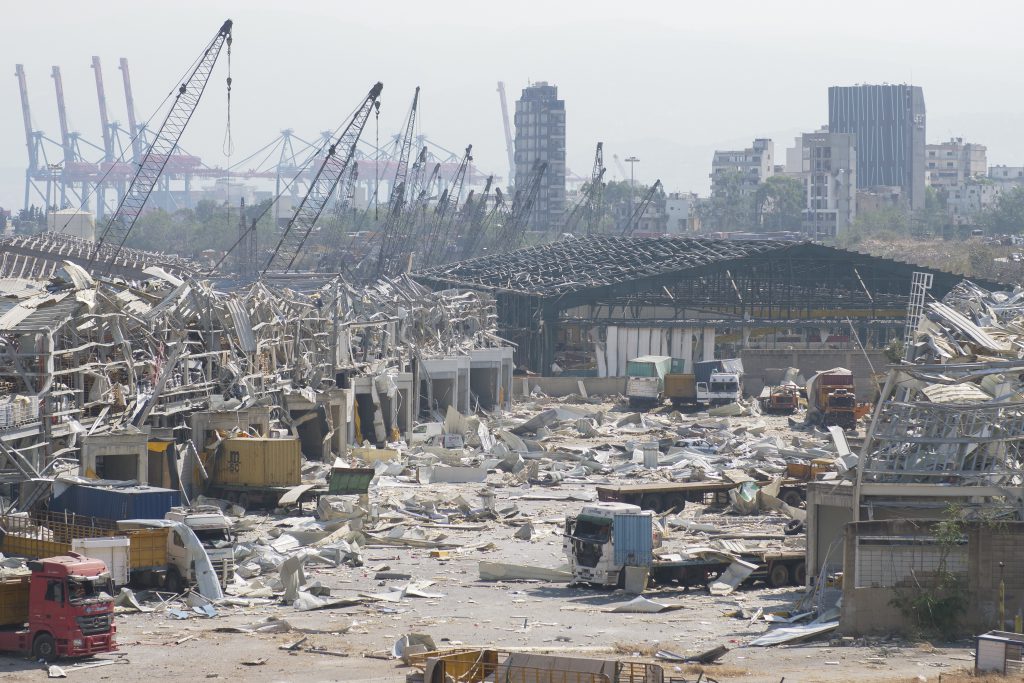
Moreover, these gases would also mix with Beirut’s already dangerous air pollution levels which were estimated at least 150% over the World Health Organization’s (WHO) standards before the disaster (WHO, 2019). What’s more, whenever large amounts of any kind of building or infrastructure is vaporized, the air will be filled with unknown levels of whatever was used in their construction such as heavy metals and of course dust, which will have a high percentage of silica (Industrial Global Union, 2020).
Although these risks will be assessed in a more accurate way in the long term, and the consequences of this negligence will be paid by future generations, it is already possible to assess the first outcomes. At this point, the most affected by this situation are children and old people; it has been reported that there has been an increase in breathing difficulties, eyes and skin irritation and also a significant increase of allergies (Greenpeace, 2020).
The most worrying thing is that the International Rescue Committee (IRC) declared that the number of COVID-19 infections has increased by 220% in the capital (New Europe, 2020). Children are now even more vulnerable to COVID-19 and cases in Lebanon in the age group 0-14 have been reaching new highs (World Vision Lebanon, 2020). The health system in Beirut is collapsing and most people cannot maintain social distancing by staying at home because the catastrophe has left thousands of families and children on the streets or has destroyed their homes. Apart from this, the European Public Health Alliance has stated that air pollution increases the risk of chronic illnesses such as heart disease, asthma and lung cancer that leave children more vulnerable to COVID-19.
Another worrying issue is that, because of the blast, pipes in some buildings have exploded and sewage might be infiltrating into the main potable water lines. That’s why a number of tests will be run on the water supply. It is a well-known fact, indeed, that water helps to protect children’s health and ensure their development and it should be a priority for everyone in Lebanon to ensure this right.
Beirut’s Environmental Challenges
It is to report that Beirut is facing one pollution problem on top of another. To start, Beirut has a lack of green areas with just two main public gardens (Sanayeh and Horch Beirut) which means a lower quality of air in the city and consequently a lower level of quality life for its children.
Moreover, Beirut has been dealing with a massive garbage crisis, the worst phase being from July 2015 to March 2016. The issue began when authorities shut down the main landfill site originally used for Beirut’s garbage south-east of the city and failed to provide any alternative solutions for months. This was and is a real sanitation crisis which still causes mountains of rotting garbage choking the air (EcoWatch, 2020).
Children are particularly affected by this crisis. Lebanon should have never started the open burning of waste and should have carried out a sustainable national waste management strategy that complies with positive environmental and public health practices and international law.
Children’s Rights After the Blast
Child protection must be a top priority for the international community as this shock can have a permanent impact on children’s social, psychological and physical well-being in the years ahead. There are thousands of injured, displaced and traumatized children currently dealing with the aftermath of Beirut’s port explosion.
UNICEF has stated that three children have been among the dead and at least 31 have been hurt seriously enough to need hospital treatment. The UN Children’s Fund has reported that around 100,000 children have been left homeless by the blast which requires need international support in order to rebuild their shattered lives.
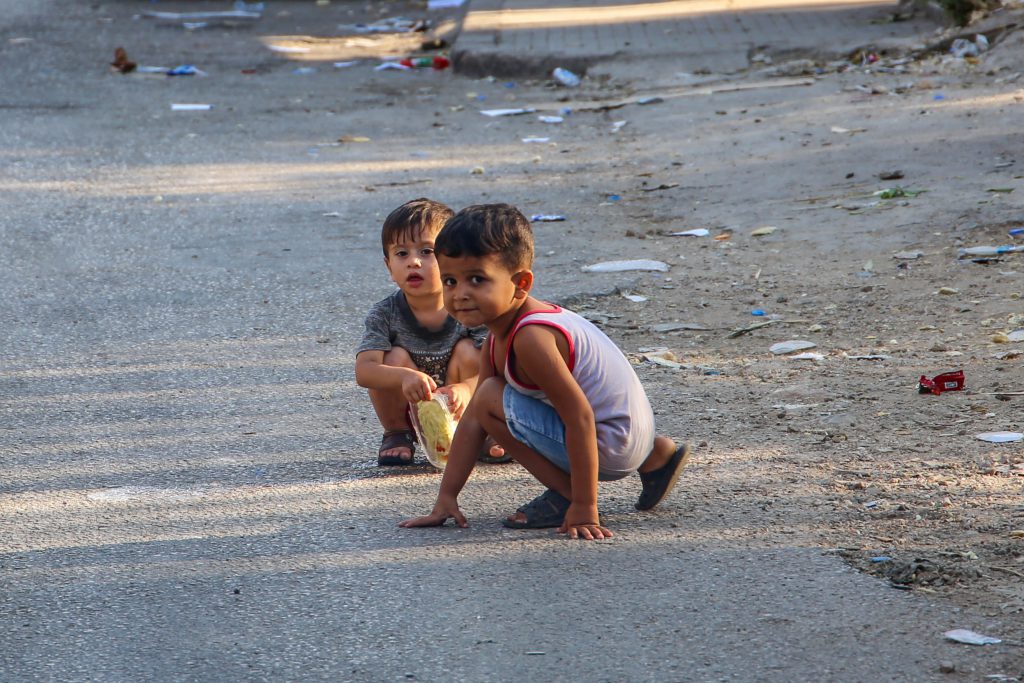
The current situation is that more than 560,000 children are struggling to survive; one in five Lebanese families must skip meals or go without food for a whole day and 40% of children (age 15+) have said that school closures due to COVID-19 are taking a toll on their mental health (Save the Children, 2020). Indeed, the United Nations Office for the Coordination of Humanitarian Affairs (OCHA) Initial Reports indicate that mental health and psychosocial support (MHPSS) needs are acute among vulnerable groups impacted by the blast.
This is so because displacement, loss of family members and high levels of stress at home can have significant consequences on them. In the upcoming months, hundreds of children may be involved in risky child labour, including the cleaning debris.
The explosion has jeopardized also the right to education of Beirut’s children: 183 education facilities have been damaged or destroyed by the blasts, affecting over 77,000 children and youth (Unicef, 2020). One of the priorities of the international community is to find solutions in order to make children stay in school because education not only provides children with opportunities for the future, but also a sense of normality, returns a feeling of hope for the future and provides a safe space for the ones who are experiencing trauma. The Covid-19 pandemic and the financial and social crisis Beirut is living makes this challenge very tough.
In addition, the blast severely threatened the right to health of every child. The Karantina Children’s Hospital, located in the port area of Beirut, has been seriously damaged and St. George Hospital has been destroyed, leaving dozens of Lebanon’s youngest cancer patients with nowhere to go for care. Moreover, children’s environmental rights have been dramatically undermined. Children are indeed particularly vulnerable to certain environmental risks, including air pollution; inadequate water, sanitation and hygiene, hazardous chemicals and waste (World Health Organization, 2020).
Greenpeace has issued a strong warning against the blast toxic hazards. Particularly, in order to try to protect public health, it recommends that the children and the elderly, as the most other vulnerable people, remain in a cleaner, indoor environment when possible. Where damage prevents this, because many homes have been shattered, vulnerable individuals should be sent to a safer place away from the immediately impacted areas, where they can be sheltered and secure.
Moreover, it is never to be forgotten that the environment determines a child’s future, and this is why there is a lot of concern about the long-term risks faced by children in Beirut who are constantly threatened by toxic agents flying in the air after the blast.
How to Help Children in Lebanon
Children in Lebanon need your help. It is possible to help them and make a real difference in their lives by supporting them in facing this emergency and in building a better future.
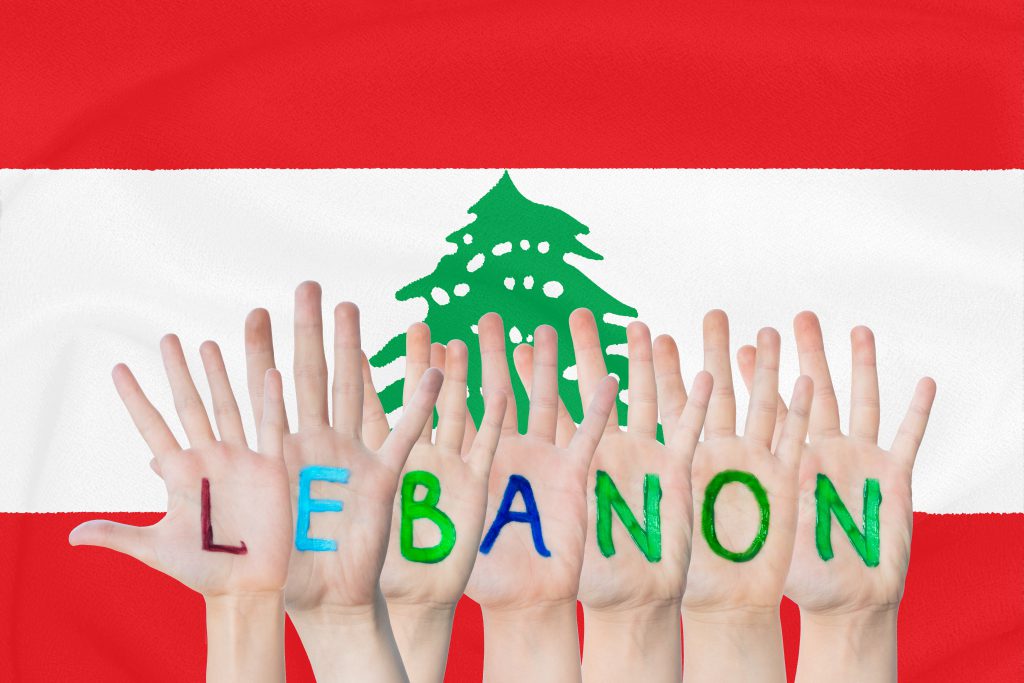
Humanium is working hard to see children’s environmental rights recognized at an international level. Indeed, Humanium signed a Joint-Call to Action for the Human Rights Council Annual Full-Day Meeting on the Rights of the Child in June 2020 and has also contributed to drafting and signing a Civil Society Call on the UN Human Rights Council to Recognize the Right to a Healthy Environment.
Humanium’s priority is to guarantee that every child is given the opportunity to empower their own life freely and positively by having all their rights recognized, protected and respected.
Written by Federica Versea
Bibliography:
BBC. (2020). Beirut explosion: Where else is ammonium nitrate being stored? Retrieved from BBC News.
DW. (2020). Toxic gas released after Beirut explosion. Retrieved from DW – Made for minds.
Foreign Policy. (2020). The Beirut Blast Is Lebanon’s Chernobyl. Retrieved from Foreign Policy.
New Europe. (2020). Beirut records 220% increase in COVID-19 cases after explosion. Retrieved from New Europe.
The Lancet. (2020). Lebanon faces humanitarian emergency after blast. Retrieved from da The Lancet.

